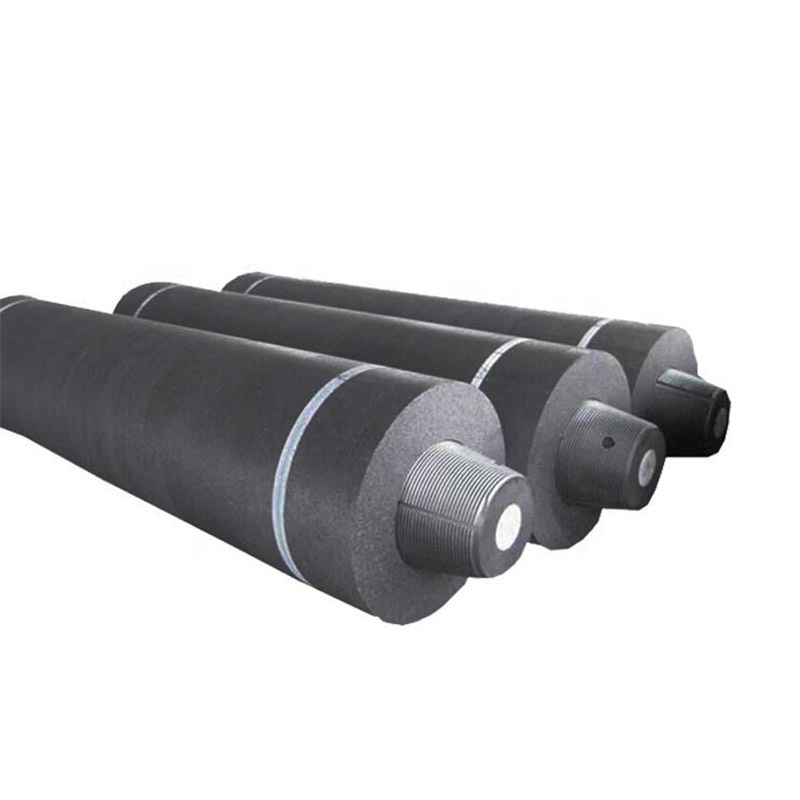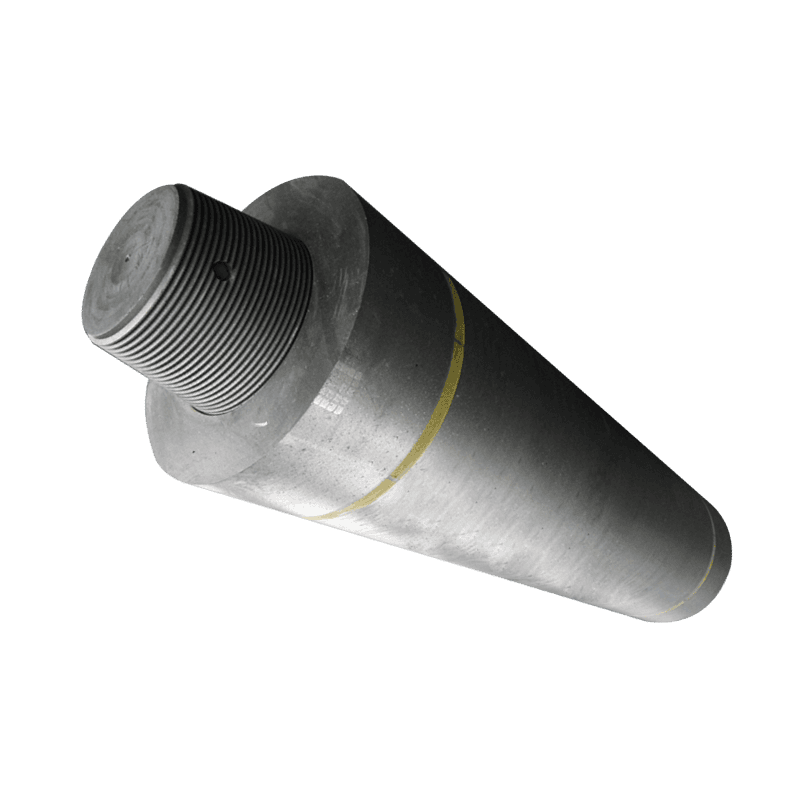The Future of UHP Graphite Electrodes in Sustainable Energy Solutions
Release Time:
Jun 20,2025
The Future of UHP Graphite Electrodes in Sustainable Energy Solutions Table of Contents 1. Introduction to UHP Graphite Electrodes 2. Significance of UHP Graphite Electrodes in Energy Production 3. Manufacturing Process of UHP Graphite Electrodes 4. Applications of UHP Graphite Electrodes in Renewable Energy 5. The Role of UHP Graphite Electrodes in Sustainability 6. Chall

The Future of UHP Graphite Electrodes in Sustainable Energy Solutions
Table of Contents
- 1. Introduction to UHP Graphite Electrodes
- 2. Significance of UHP Graphite Electrodes in Energy Production
- 3. Manufacturing Process of UHP Graphite Electrodes
- 4. Applications of UHP Graphite Electrodes in Renewable Energy
- 5. The Role of UHP Graphite Electrodes in Sustainability
- 6. Challenges Facing UHP Graphite Electrodes
- 7. Future Trends in UHP Graphite Electrodes
- 8. Conclusion
- 9. Frequently Asked Questions
1. Introduction to UHP Graphite Electrodes
UHP graphite electrodes have emerged as a cornerstone in the landscape of modern energy solutions. These innovative components are integral to the operations of electric arc furnaces (EAFs), which are crucial for steel manufacturing and various metallurgical processes. The continuous growth of the renewable energy sector underscores the importance of UHP graphite electrodes, particularly as industries shift towards more sustainable practices. Their remarkable properties, including high conductivity, thermal resistance, and mechanical strength, position them as vital elements in the quest for efficient energy solutions.
2. Significance of UHP Graphite Electrodes in Energy Production
The significance of UHP graphite electrodes in energy production cannot be overstated. As industries increasingly prioritize efficiency and reduced carbon emissions, these electrodes play a critical role in facilitating the transition to greener energy. Their unparalleled electrical conductivity allows for optimal performance in electric arc furnaces, leading to faster melting times and reduced energy consumption. This efficiency not only makes steel production more cost-effective but also aligns with global efforts to minimize the environmental impact of industrial processes.
The Demand for Sustainable Energy Solutions
The global demand for sustainable energy solutions is rising. UHP graphite electrodes are at the forefront of this transition, serving as indispensable components in manufacturing processes that prioritize sustainability. They enable the production of high-quality steel while minimizing the carbon footprint associated with traditional methods. As countries around the world implement stricter environmental regulations, the reliance on UHP graphite electrodes is expected to grow.
3. Manufacturing Process of UHP Graphite Electrodes
Understanding the manufacturing process of UHP graphite electrodes is essential to appreciating their role in sustainable energy solutions. The fabrication of these electrodes involves several intricate steps:
Raw Material Selection
The production begins with the selection of high-quality raw materials, primarily petroleum needle coke. This material is essential for achieving the high density and electrical conductivity required for UHP graphite electrodes.
Baking and Graphitization
The selected raw materials undergo a baking process, where they are heated to extreme temperatures to remove volatile substances. Following this, the graphitization process occurs, where the baked material is subjected to temperatures exceeding 2,500°C. This step is crucial for enhancing the electrical and thermal properties of the electrodes.
Machining and Quality Control
Once the electrodes have been graphitized, they are meticulously machined to required specifications. Rigorous quality control measures are implemented to ensure that each electrode meets industry standards for performance and reliability.
4. Applications of UHP Graphite Electrodes in Renewable Energy
UHP graphite electrodes find diverse applications across various sectors within renewable energy. Understanding these applications is key to recognizing their role in sustainable practices.
Electric Arc Furnaces (EAFs)
One of the primary applications of UHP graphite electrodes is in electric arc furnaces used for steel production. EAFs are increasingly favored for their ability to recycle scrap steel, significantly reducing waste and energy consumption compared to traditional blast furnaces. The use of UHP electrodes enhances the efficiency of EAFs, allowing for quicker melting and lower energy costs.
Battery Production for Electric Vehicles
With the rise of electric vehicles (EVs), UHP graphite electrodes are becoming instrumental in the production of batteries. Graphite serves as the anode material in lithium-ion batteries, which power EVs. As the demand for EVs grows, so does the need for high-quality graphite electrodes, making them essential for sustainable transportation solutions.
Hydrogen Production
The production of hydrogen, a clean fuel alternative, increasingly relies on UHP graphite electrodes. Electrolysis, a method used to produce hydrogen from water, benefits from the high conductivity of these electrodes, ensuring efficient energy usage during the process. This application aligns with global efforts to develop hydrogen as a sustainable energy source.
5. The Role of UHP Graphite Electrodes in Sustainability
UHP graphite electrodes significantly contribute to the sustainability of energy solutions through various mechanisms.
Reducing Carbon Emissions
The adoption of UHP graphite electrodes in manufacturing processes facilitates substantial reductions in carbon emissions. By optimizing energy efficiency in EAFs and other applications, industries can lower their overall carbon footprint, contributing to global climate change mitigation efforts.
Supporting Circular Economy Practices
UHP graphite electrodes promote circular economy practices by enabling the recycling of materials. The ability of EAFs to utilize scrap steel means that less virgin material is needed, reducing the environmental impact associated with mining and processing raw resources.
Innovative Research and Development
Ongoing research and development efforts focused on UHP graphite electrodes are paving the way for even more sustainable applications. Innovations in materials science and engineering aim to enhance the properties of these electrodes, making them even more efficient and environmentally friendly.
6. Challenges Facing UHP Graphite Electrodes
Despite their many advantages, the UHP graphite electrode industry faces several challenges that must be addressed to ensure continued growth and sustainability.
Resource Scarcity
The availability of high-quality raw materials for UHP graphite electrodes is a significant concern. The reliance on petroleum needle coke means that fluctuations in oil prices and supply can directly impact production costs and availability.
Environmental Concerns in Production
The manufacturing process of UHP graphite electrodes, particularly graphitization, can be energy-intensive and produce emissions. Efforts to minimize the environmental impact of these processes are ongoing, but challenges remain in achieving truly sustainable production methods.
Market Competition
As the demand for UHP graphite electrodes grows, competition among manufacturers increases. Companies must continuously innovate and improve efficiency to maintain a competitive edge in the market. This competition can lead to price volatility and impact the overall stability of the industry.
7. Future Trends in UHP Graphite Electrodes
The future of UHP graphite electrodes in sustainable energy solutions is promising, with several trends expected to shape the industry.
Advancements in Material Science
Future developments in material science will likely lead to the creation of even more efficient UHP graphite electrodes. Researchers are exploring alternative materials and composites that could enhance conductivity and thermal resistance while reducing environmental impact.
Increased Integration with Renewable Technologies
As renewable energy technologies continue to evolve, UHP graphite electrodes will increasingly find applications in emerging fields. Integration with solar, wind, and hydrogen production technologies will be crucial for driving sustainable energy solutions forward.
Focus on Recycling and Reusability
The emphasis on circular economy practices will lead to innovations focused on recycling and reusing UHP graphite electrodes. Developing processes to reclaim and repurpose these electrodes will further enhance their sustainability credentials and reduce reliance on raw materials.
8. Conclusion
The future of UHP graphite electrodes is intrinsically linked to the ongoing pursuit of sustainable energy solutions. Their exceptional properties and diverse applications position them as vital components in various industries, from steel production to battery manufacturing. As we navigate the challenges of resource scarcity and environmental concerns, continued innovation and commitment to sustainability will be essential in maximizing the potential of UHP graphite electrodes. By embracing these advancements, we can contribute to a greener, more sustainable future that aligns with global energy goals.
9. Frequently Asked Questions
What are UHP graphite electrodes used for?
UHP graphite electrodes are primarily used in electric arc furnaces for steel production, as well as in the manufacturing of batteries for electric vehicles and hydrogen production.
How do UHP graphite electrodes contribute to sustainability?
These electrodes enable efficient energy use in industrial processes, reduce carbon emissions, and support the recycling of materials, which all contribute to sustainability efforts.
What challenges does the UHP graphite electrode industry face?
Challenges include resource scarcity, environmental concerns during production, and increasing market competition.
What are the future trends for UHP graphite electrodes?
Future trends include advancements in material science, increased integration with renewable technologies, and a focus on recycling and reusability.
Why are UHP graphite electrodes important for electric vehicles?
They are crucial as they serve as the anode material in lithium-ion batteries, which power electric vehicles, enhancing their performance and sustainability.
This comprehensive exploration reveals that UHP graphite electrodes hold the key to advancing sustainable energy solutions, making them indispensable in the transition toward a greener future. Their continued evolution will undoubtedly shape the energy landscape in the years to come.
Keywords:
More information









